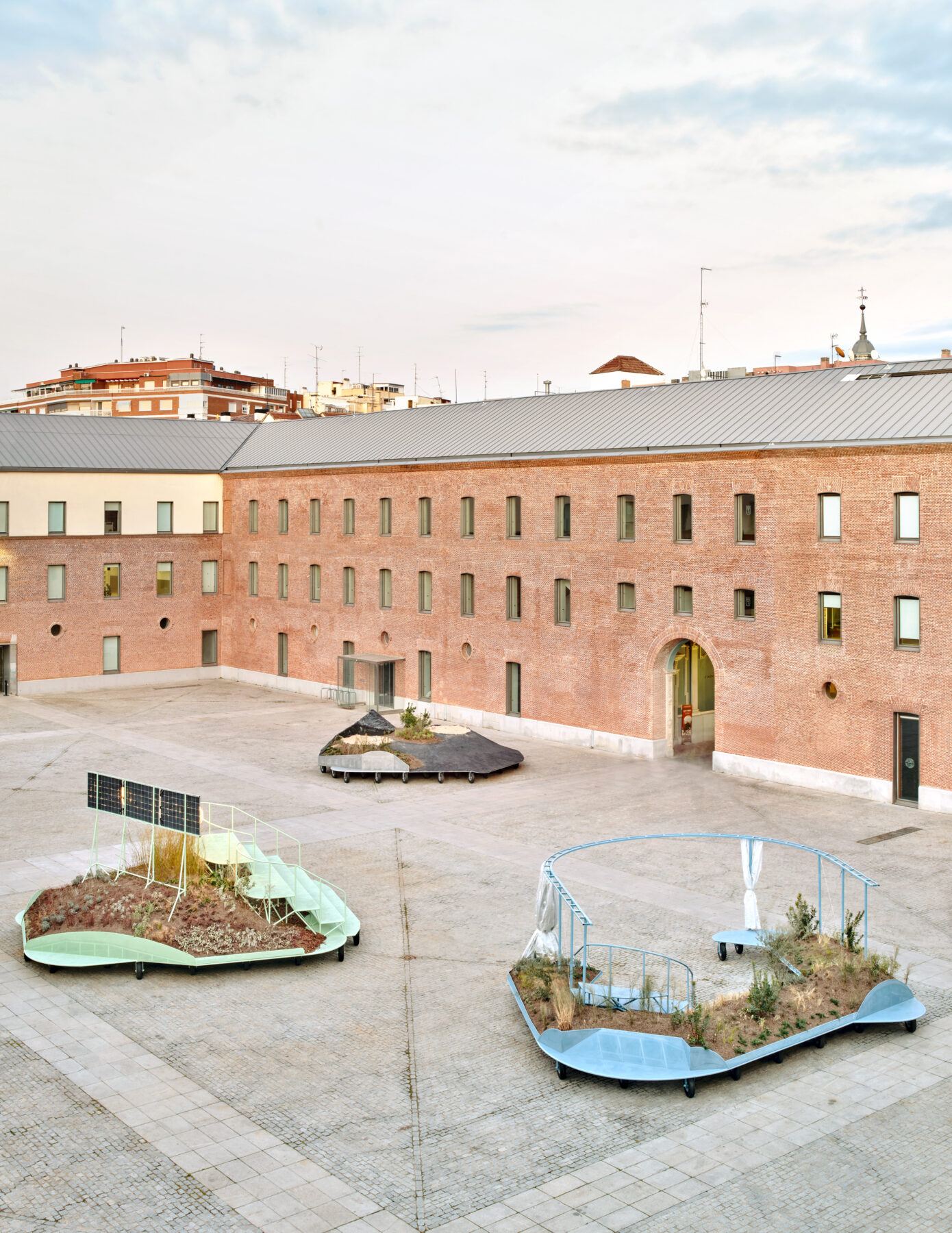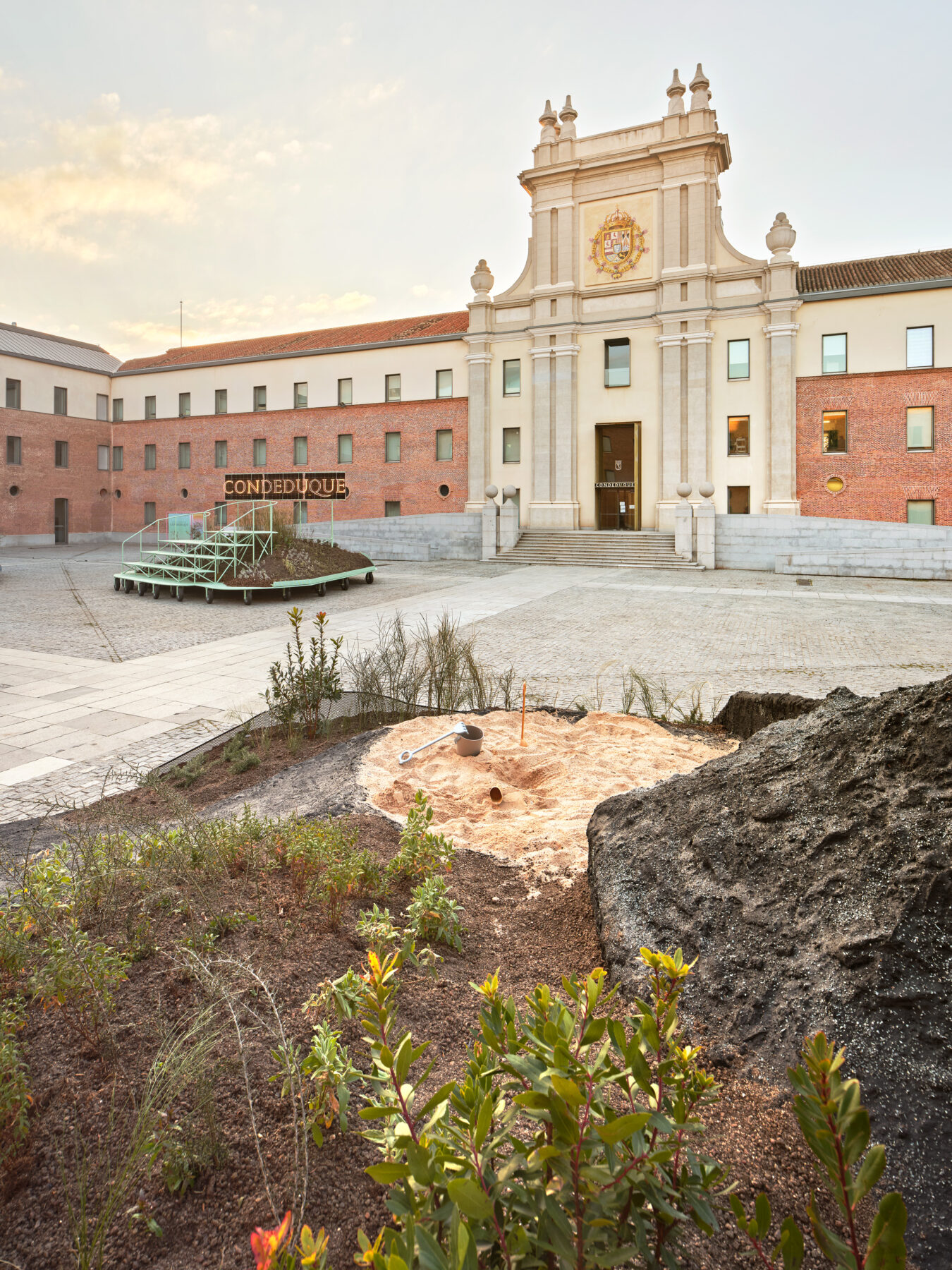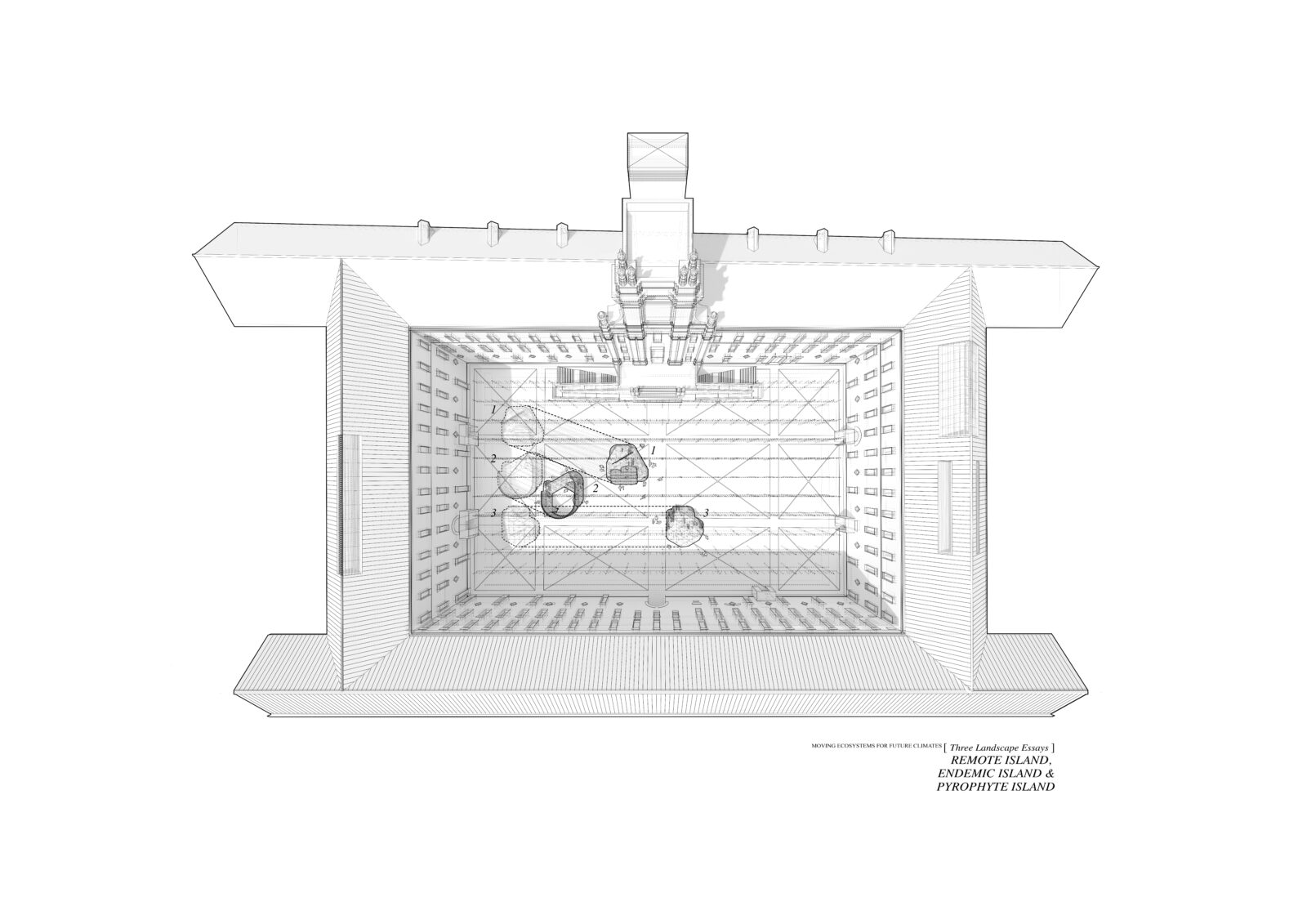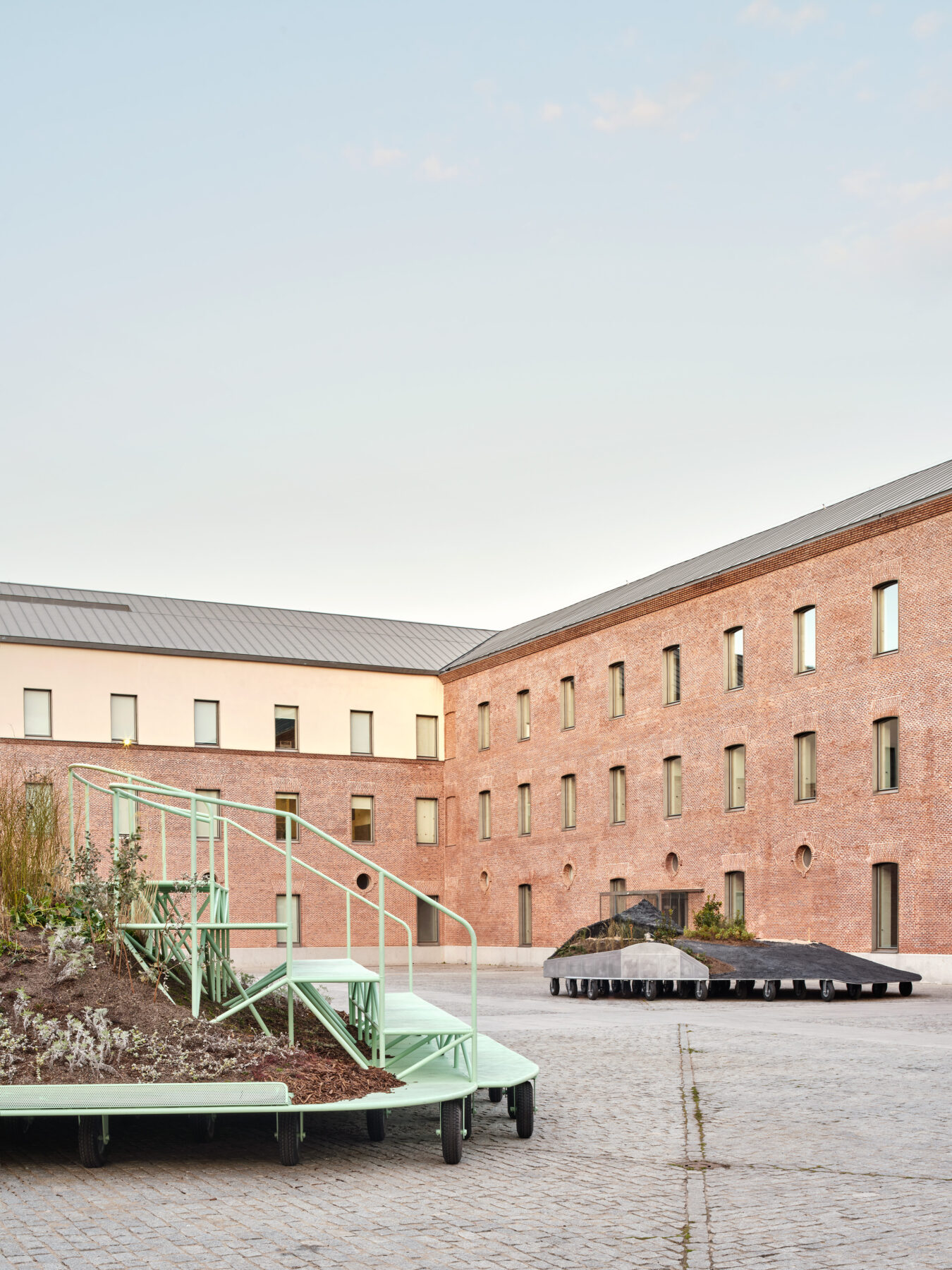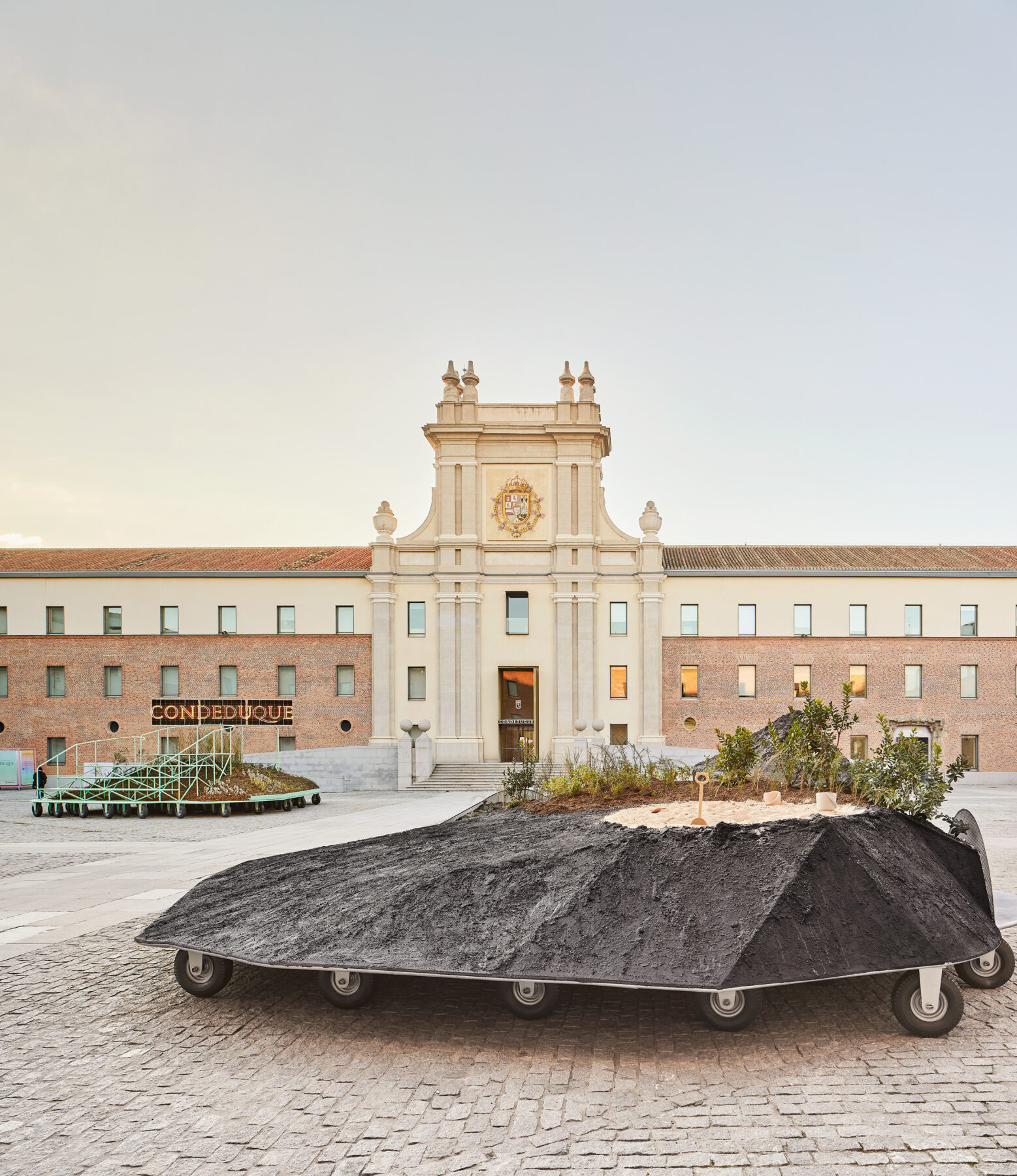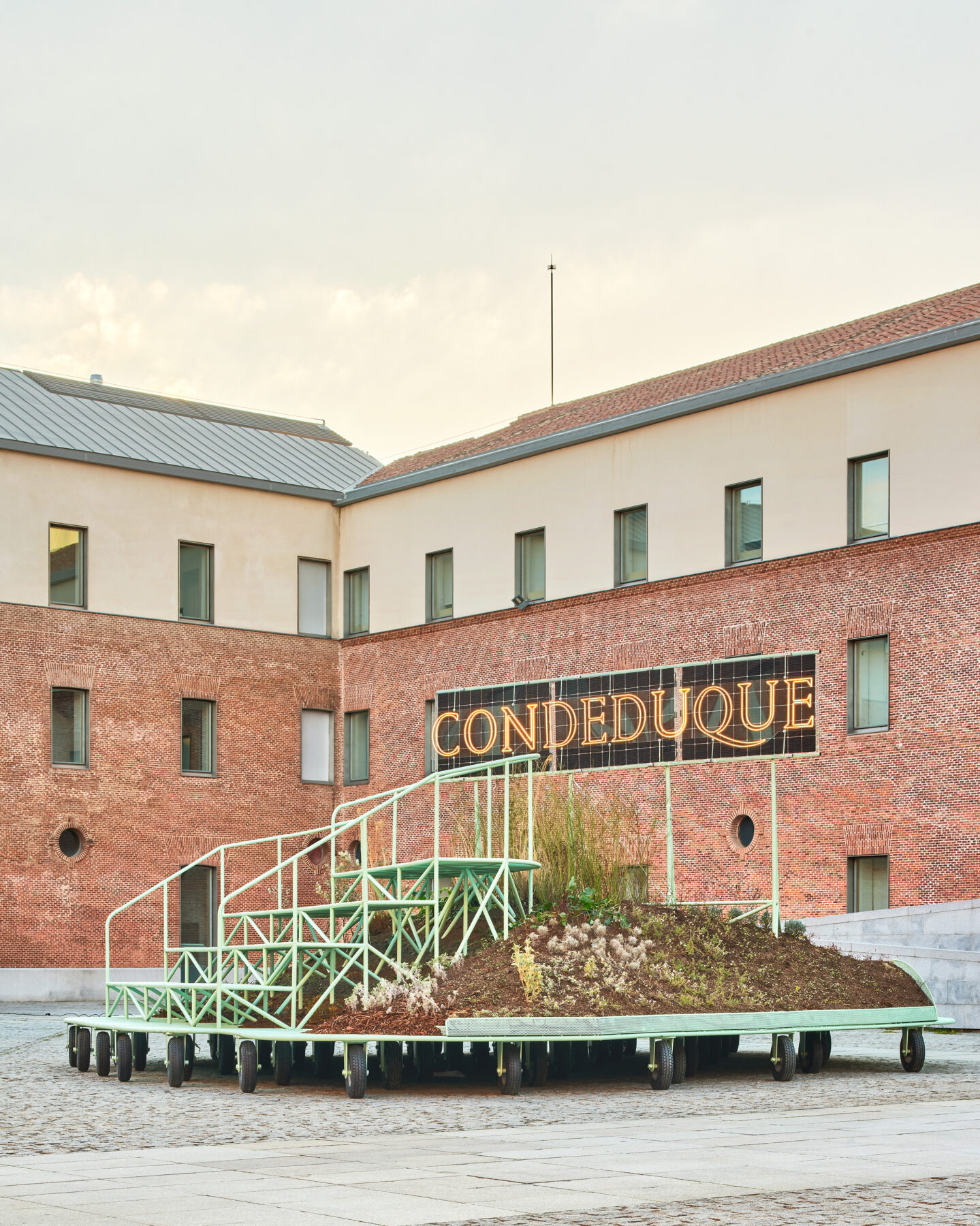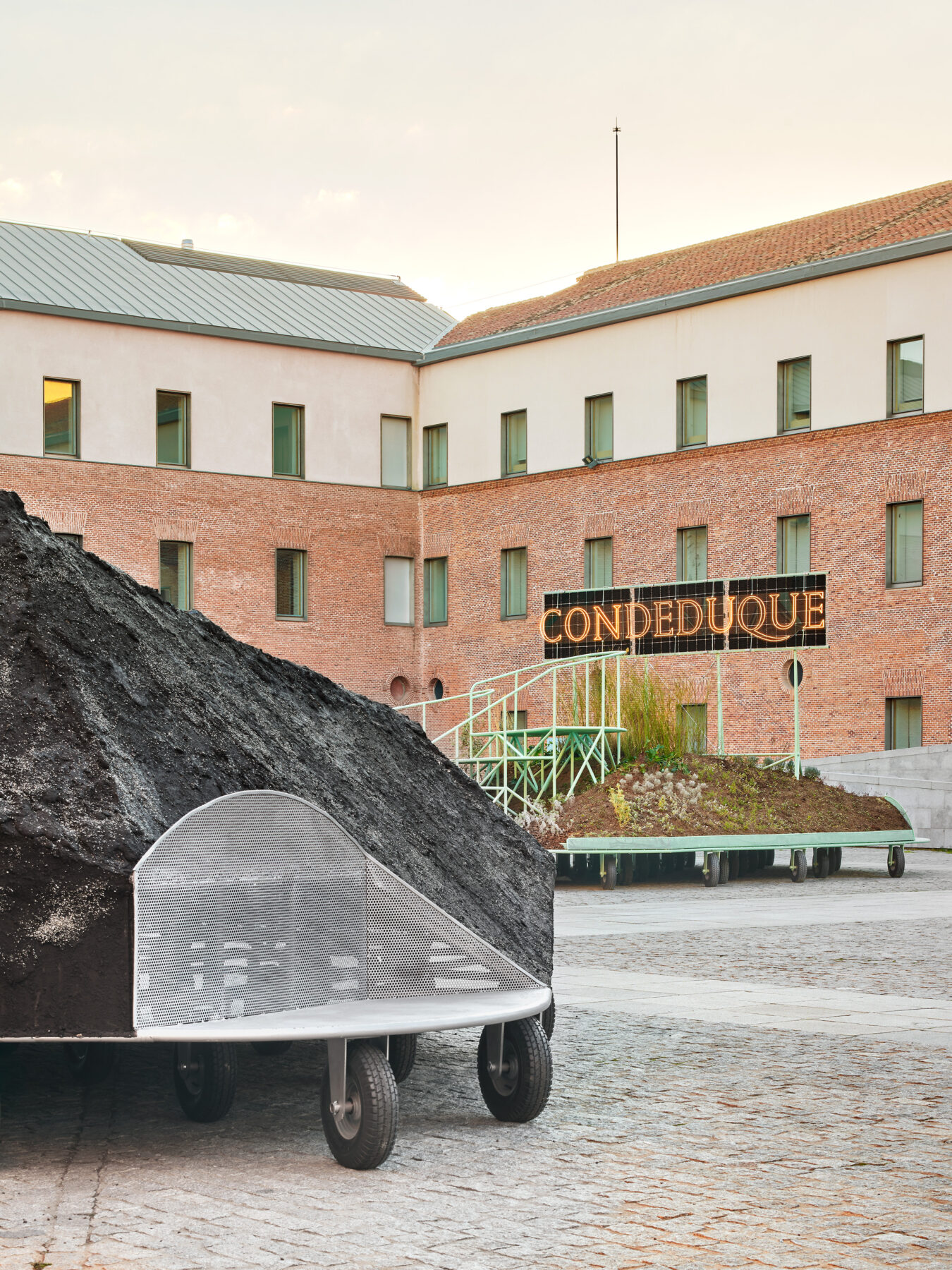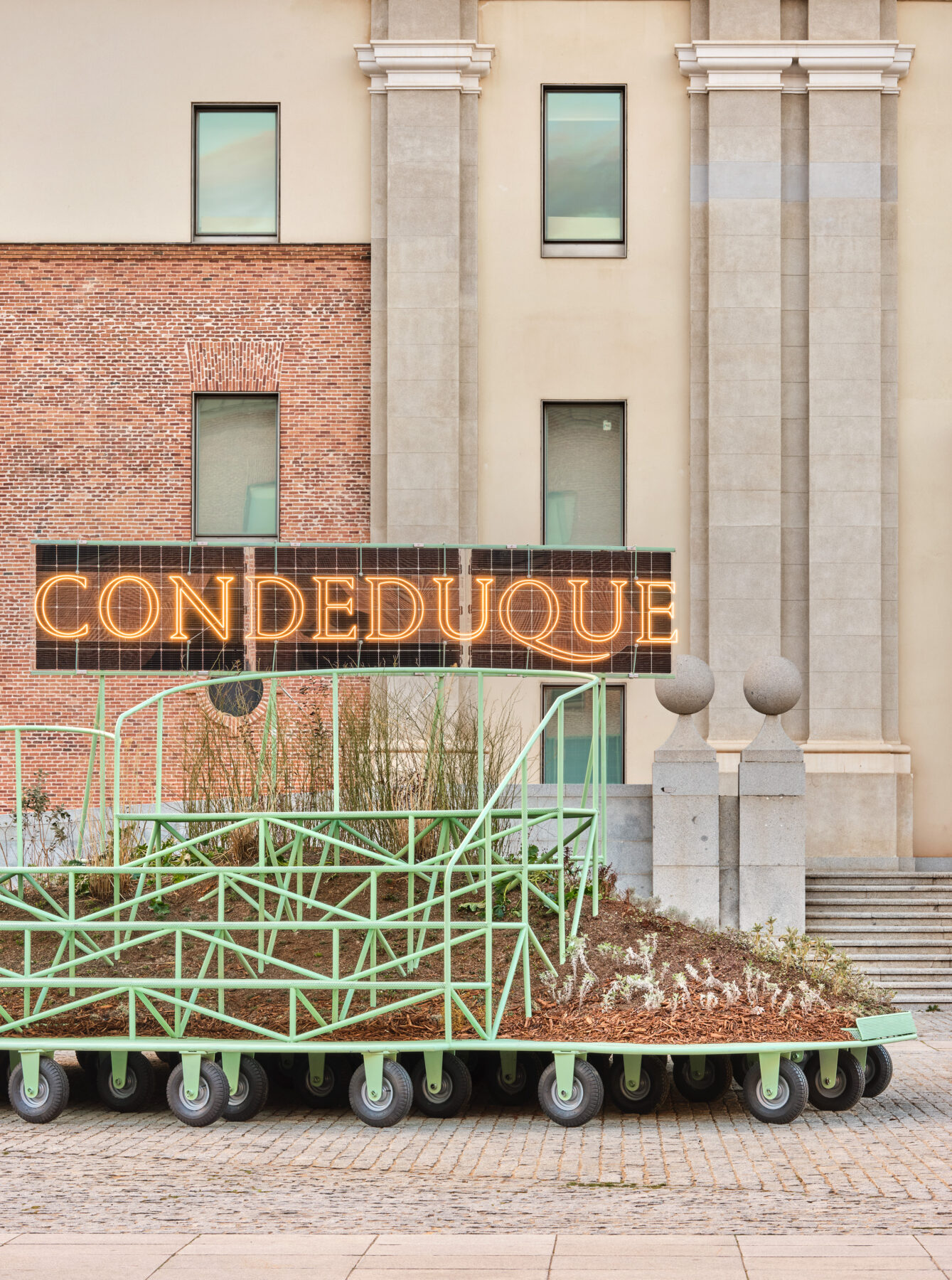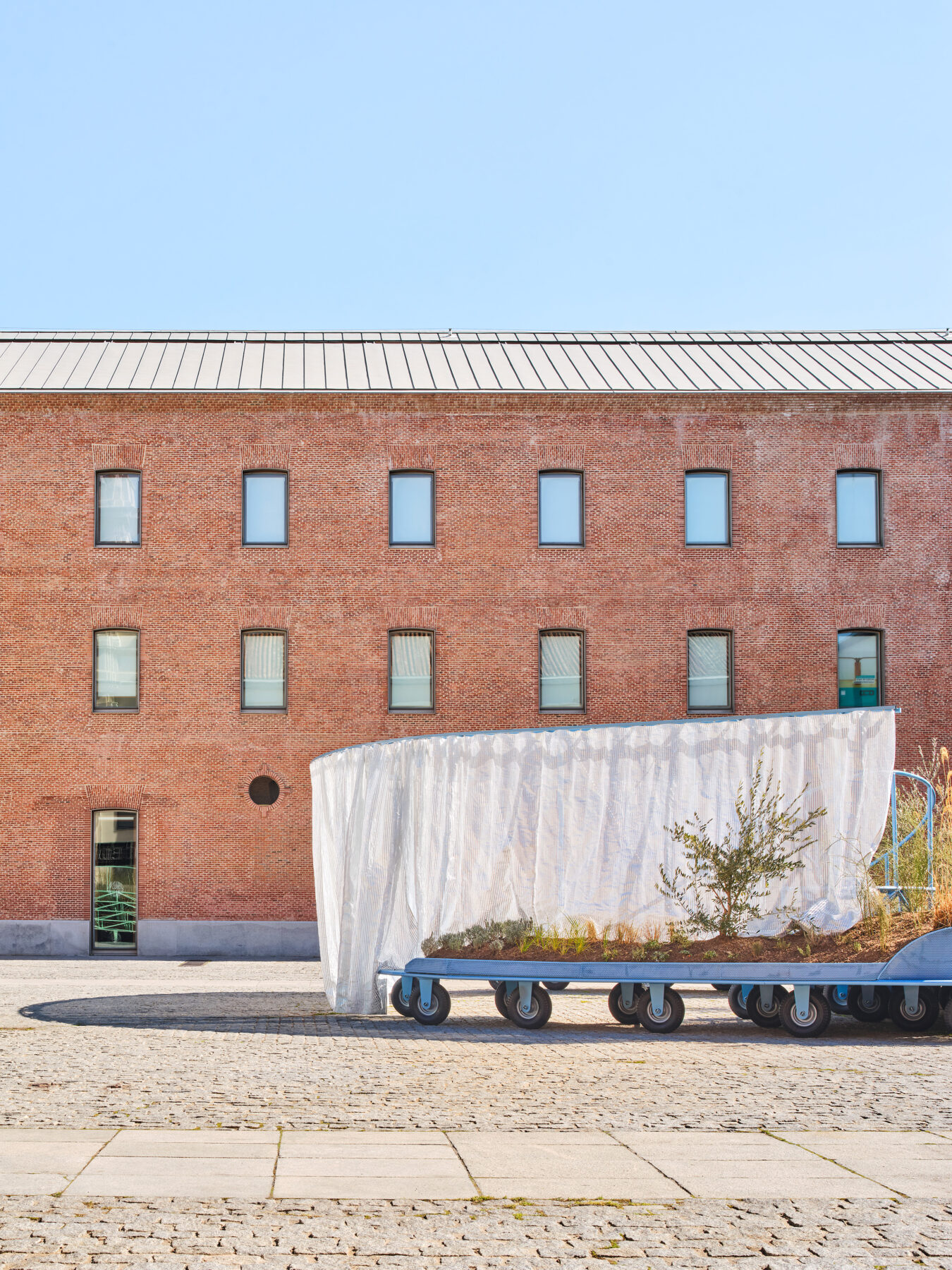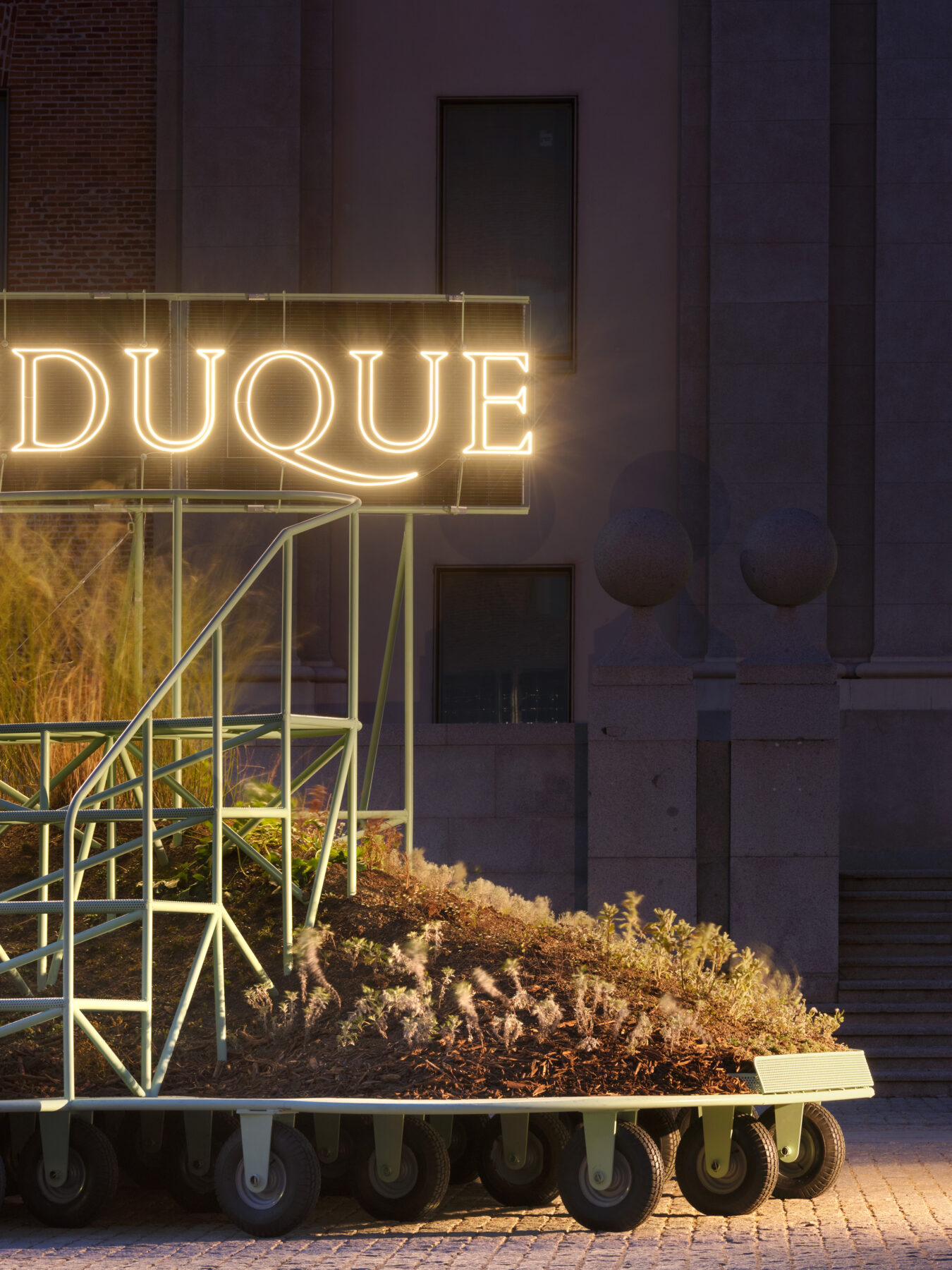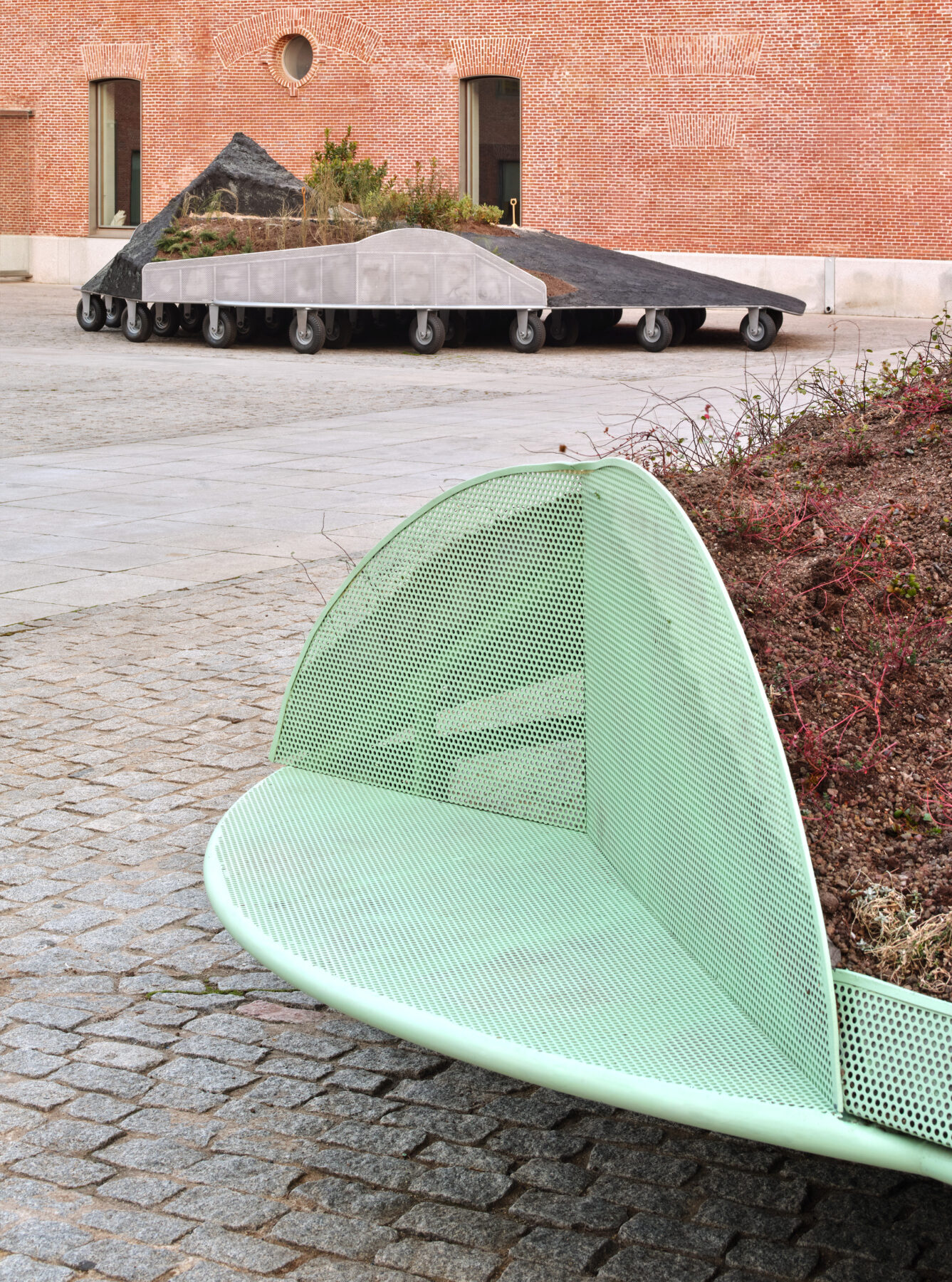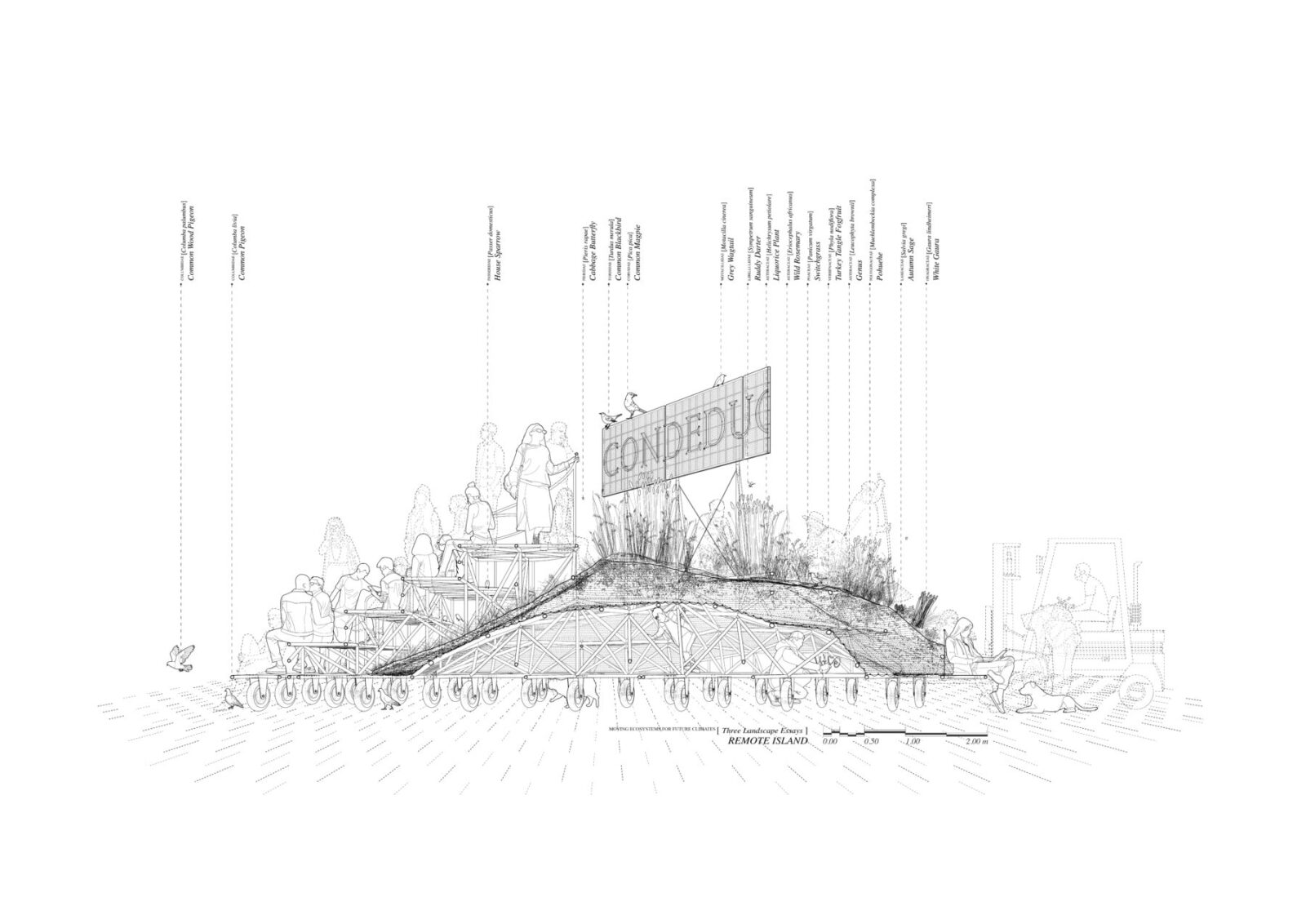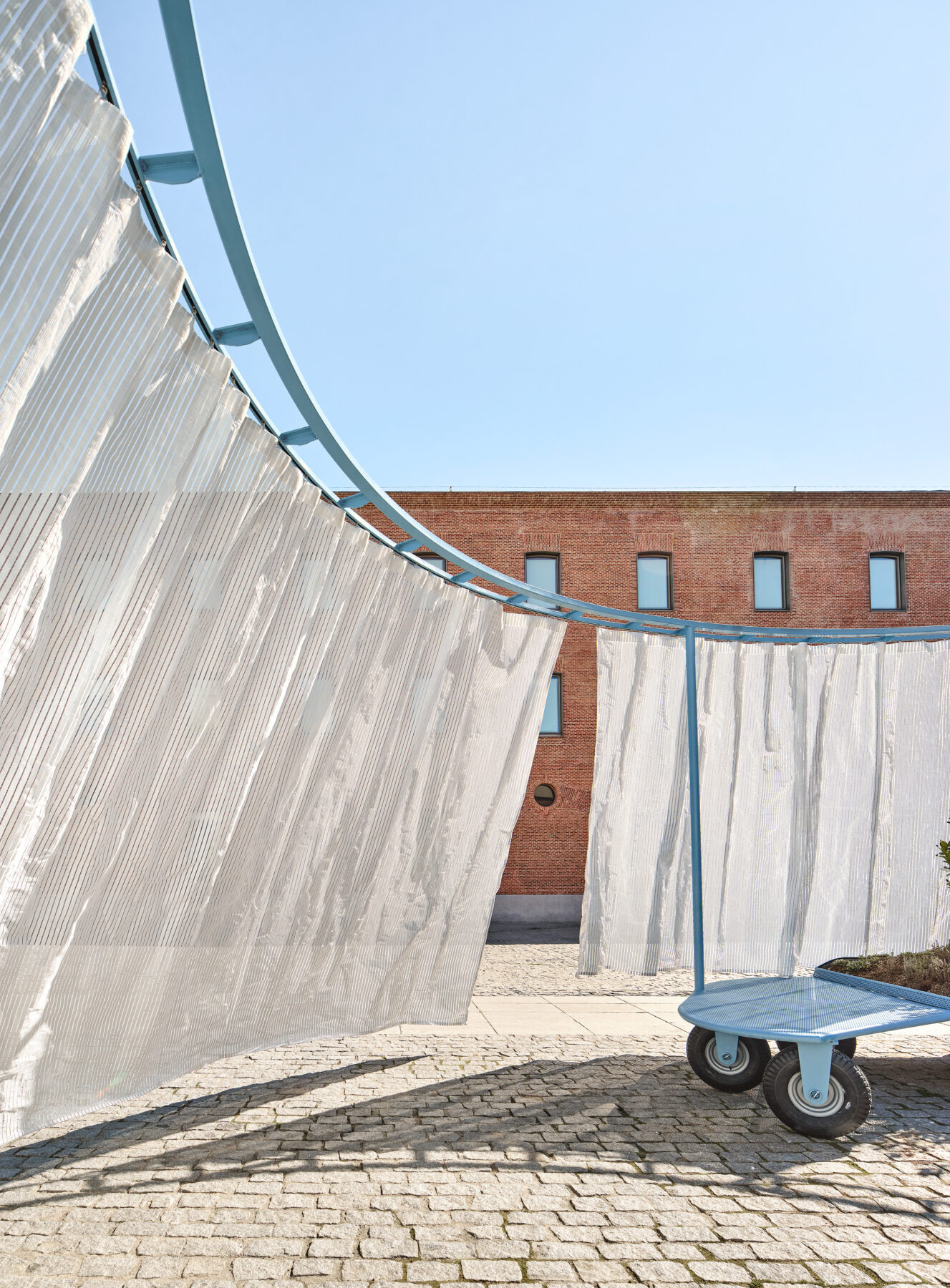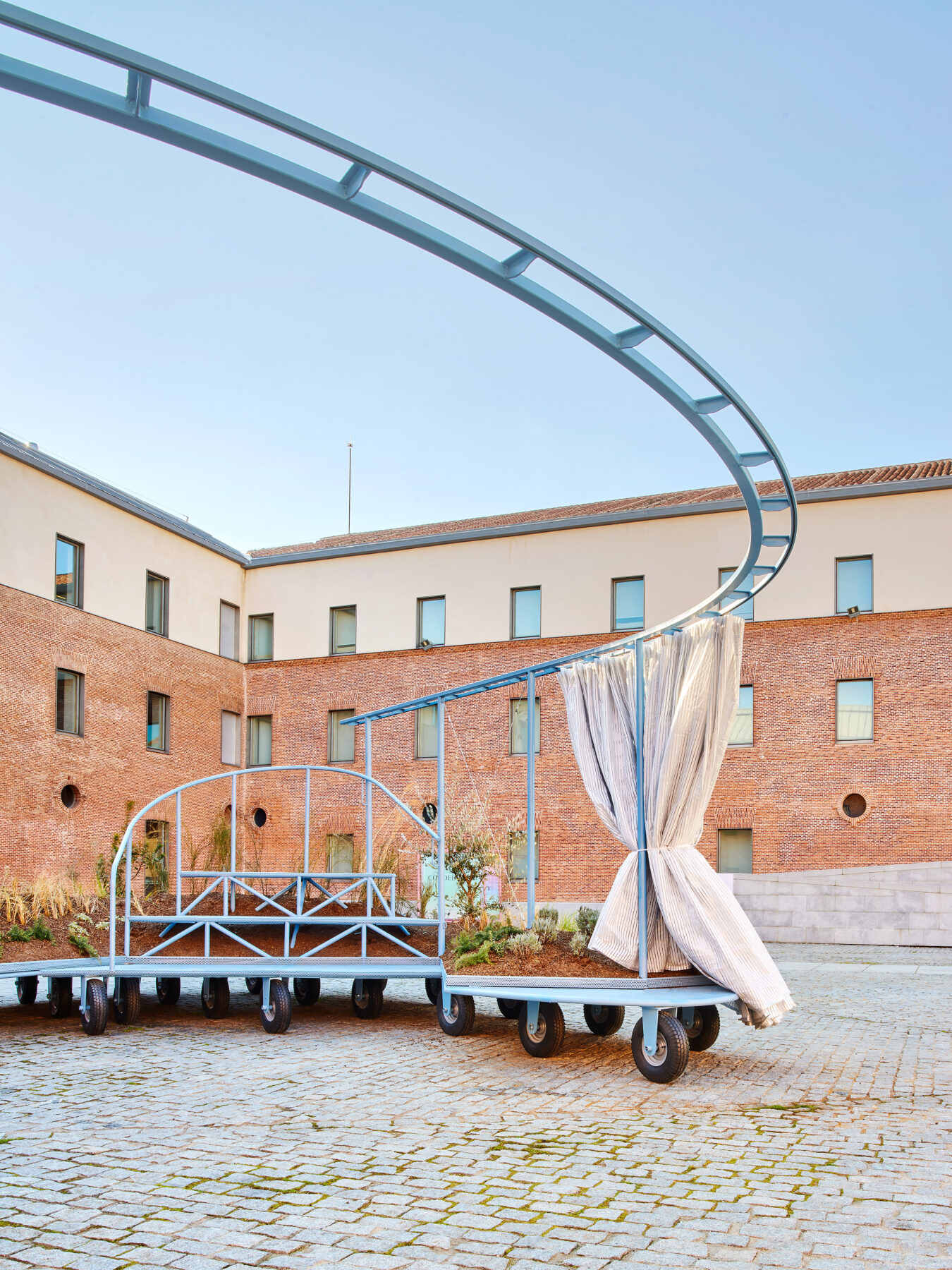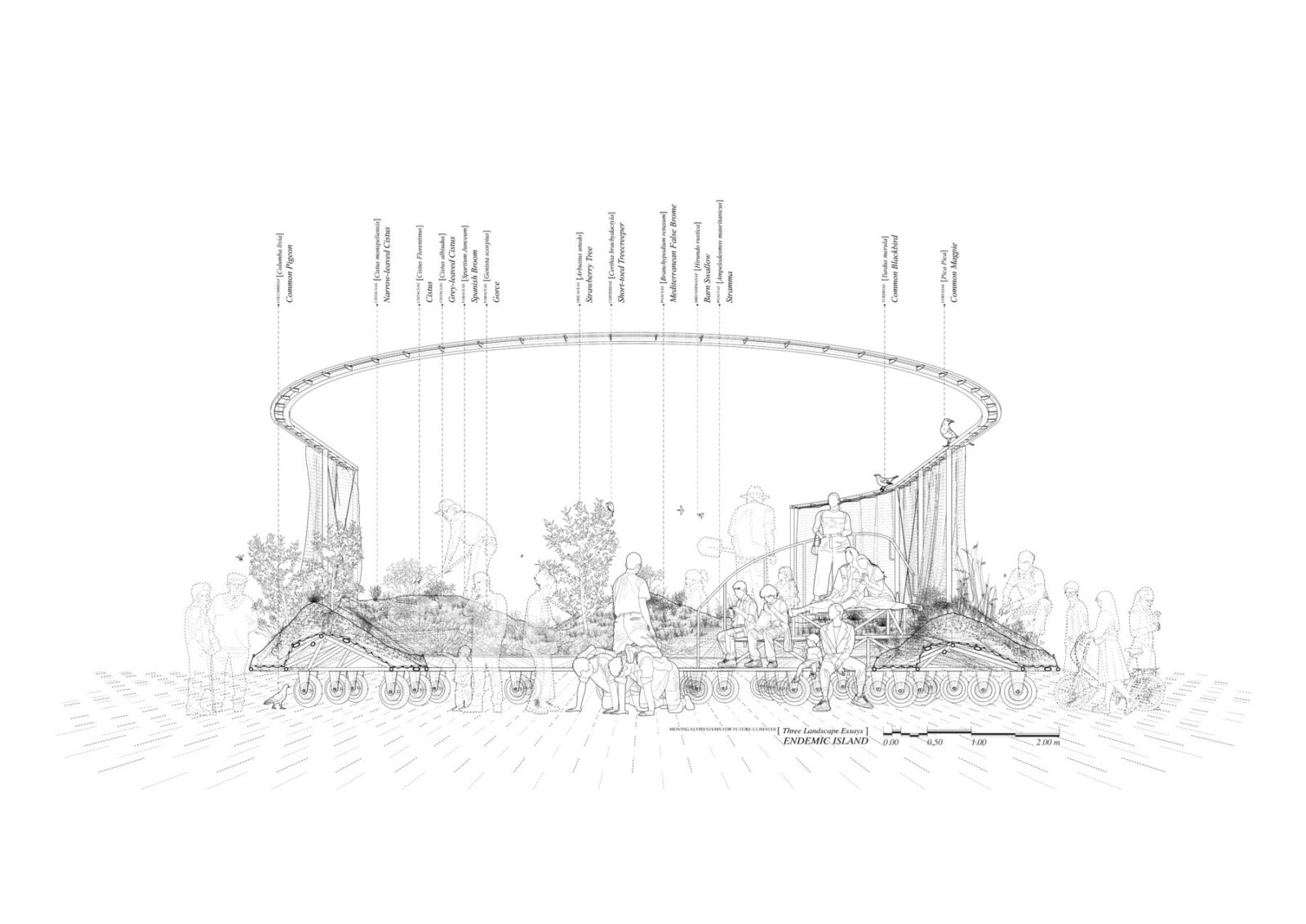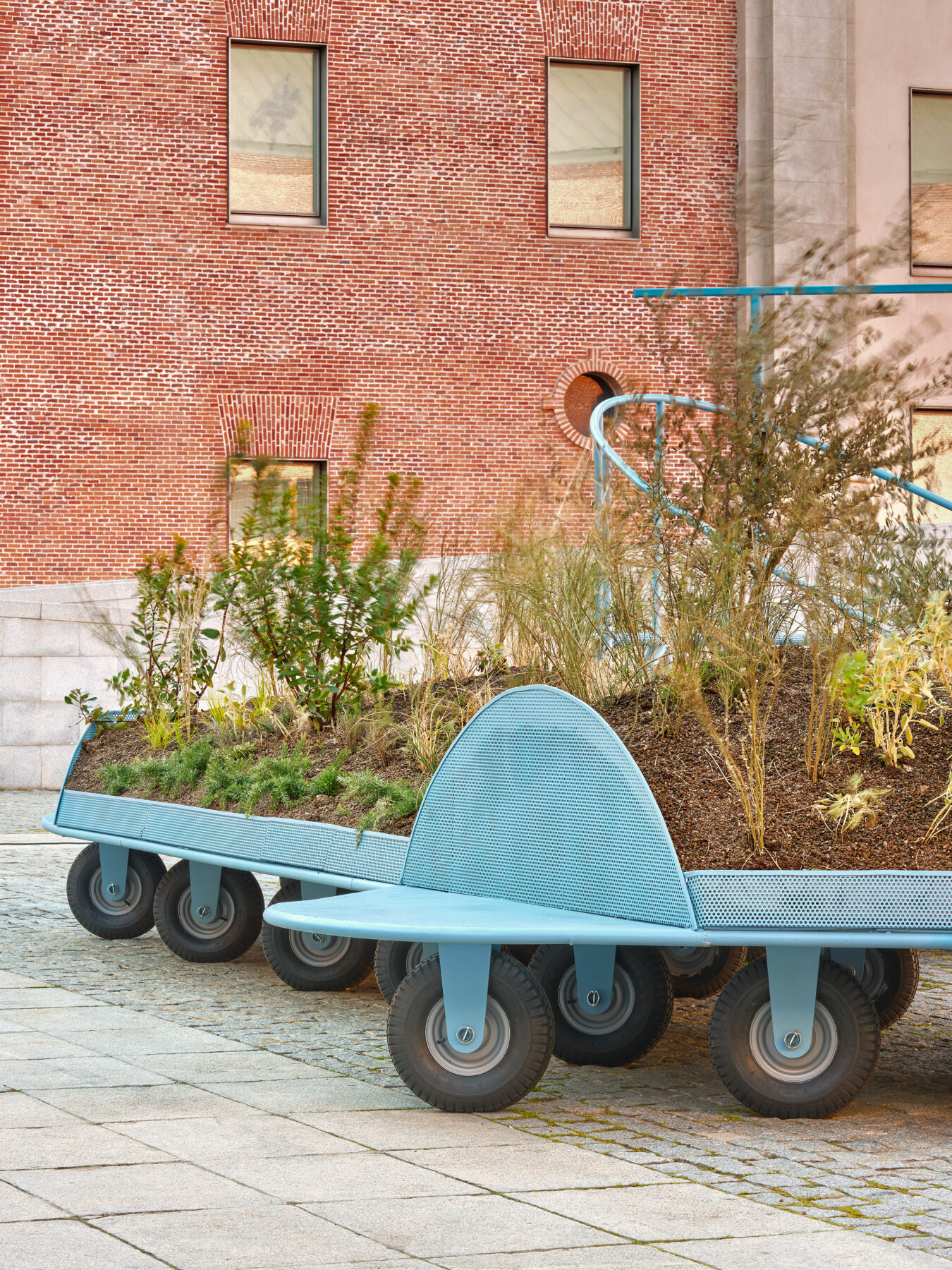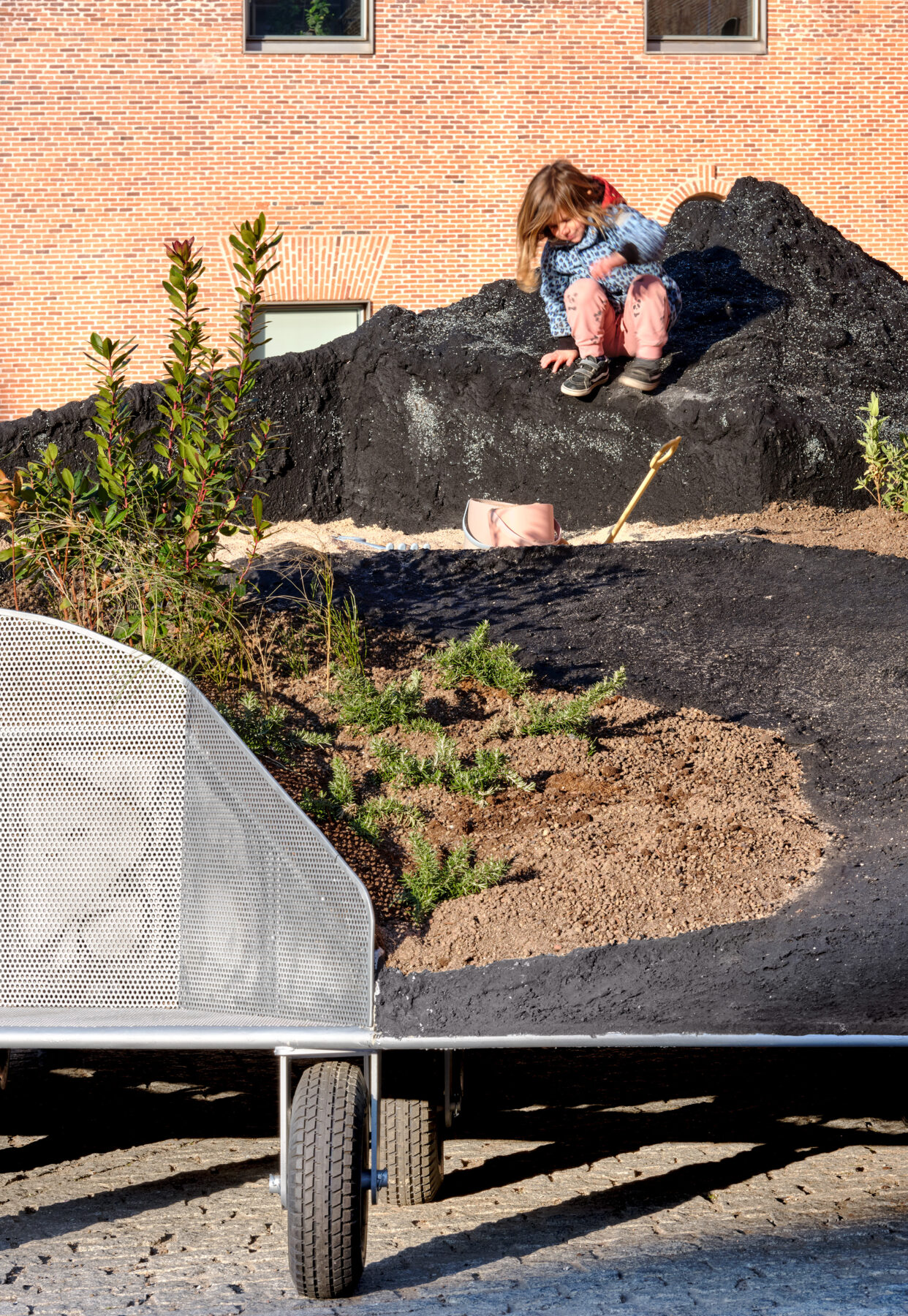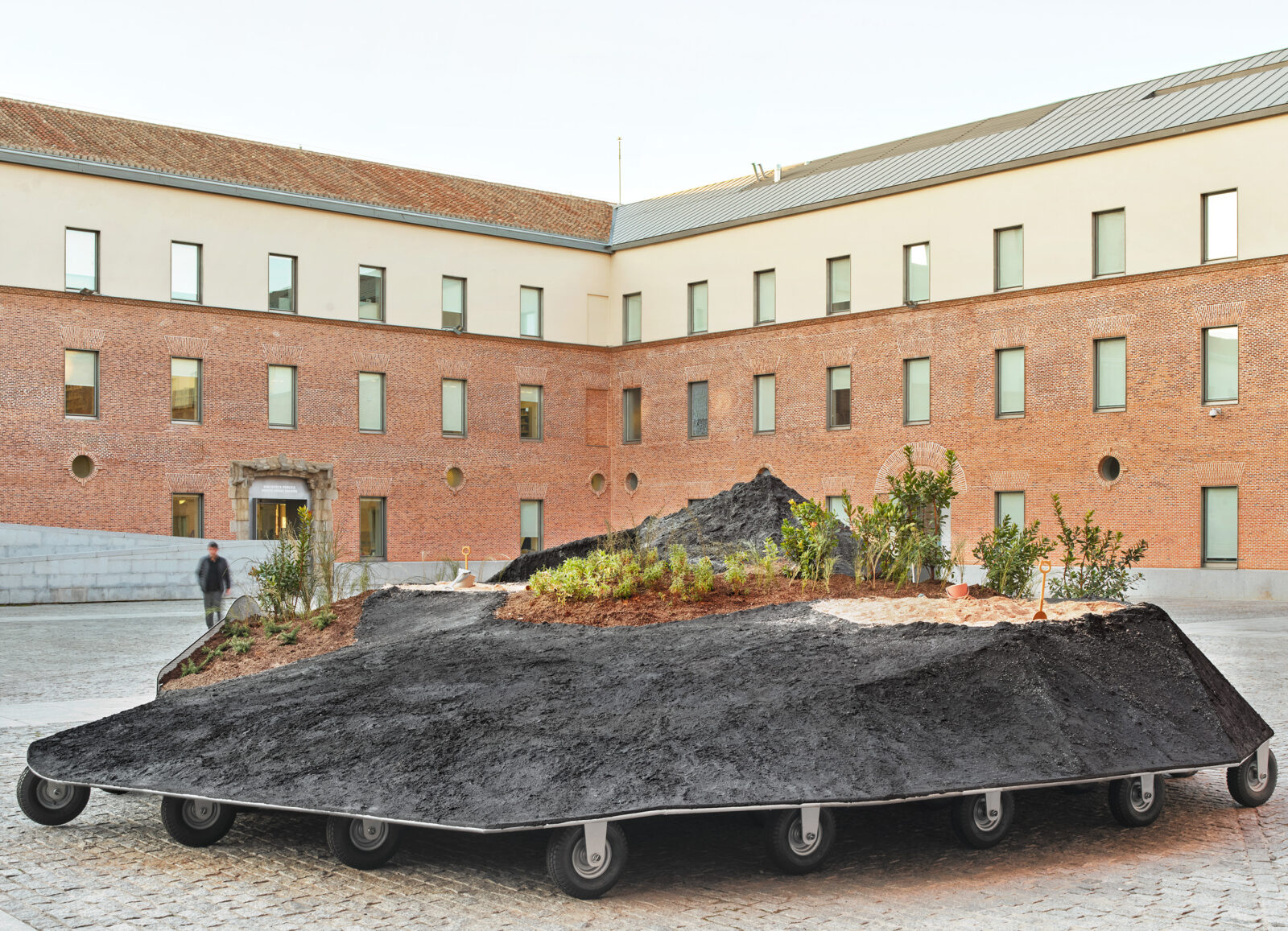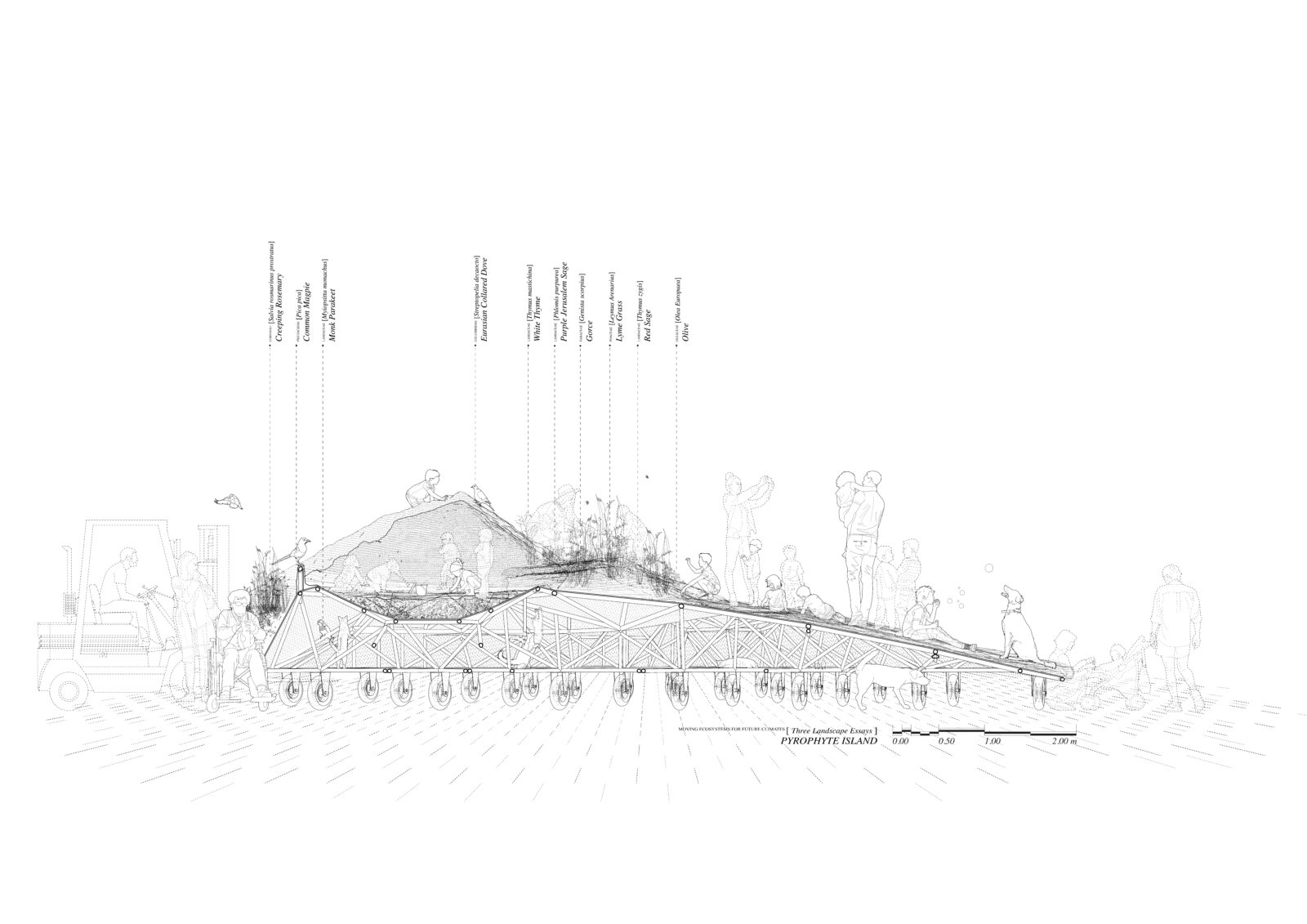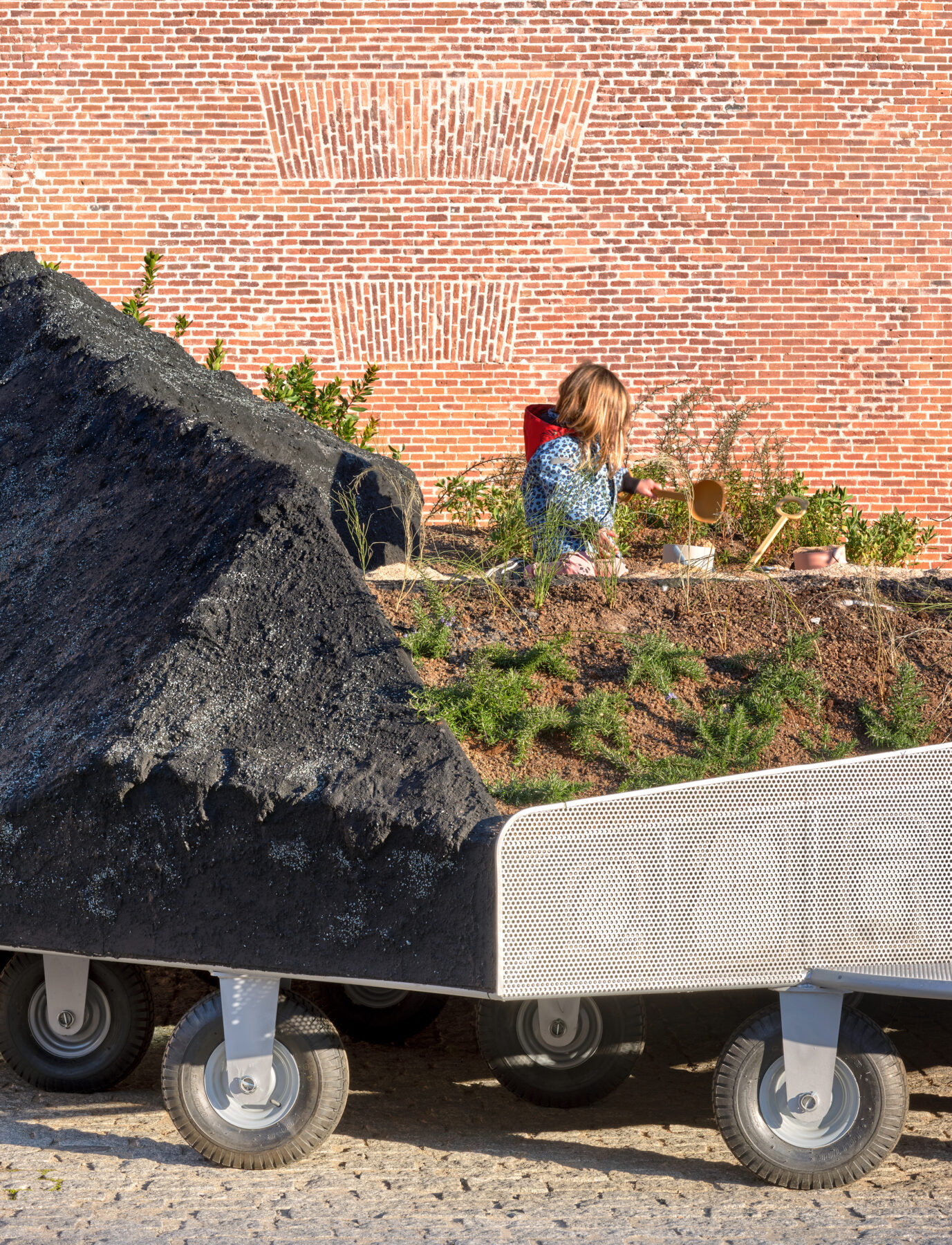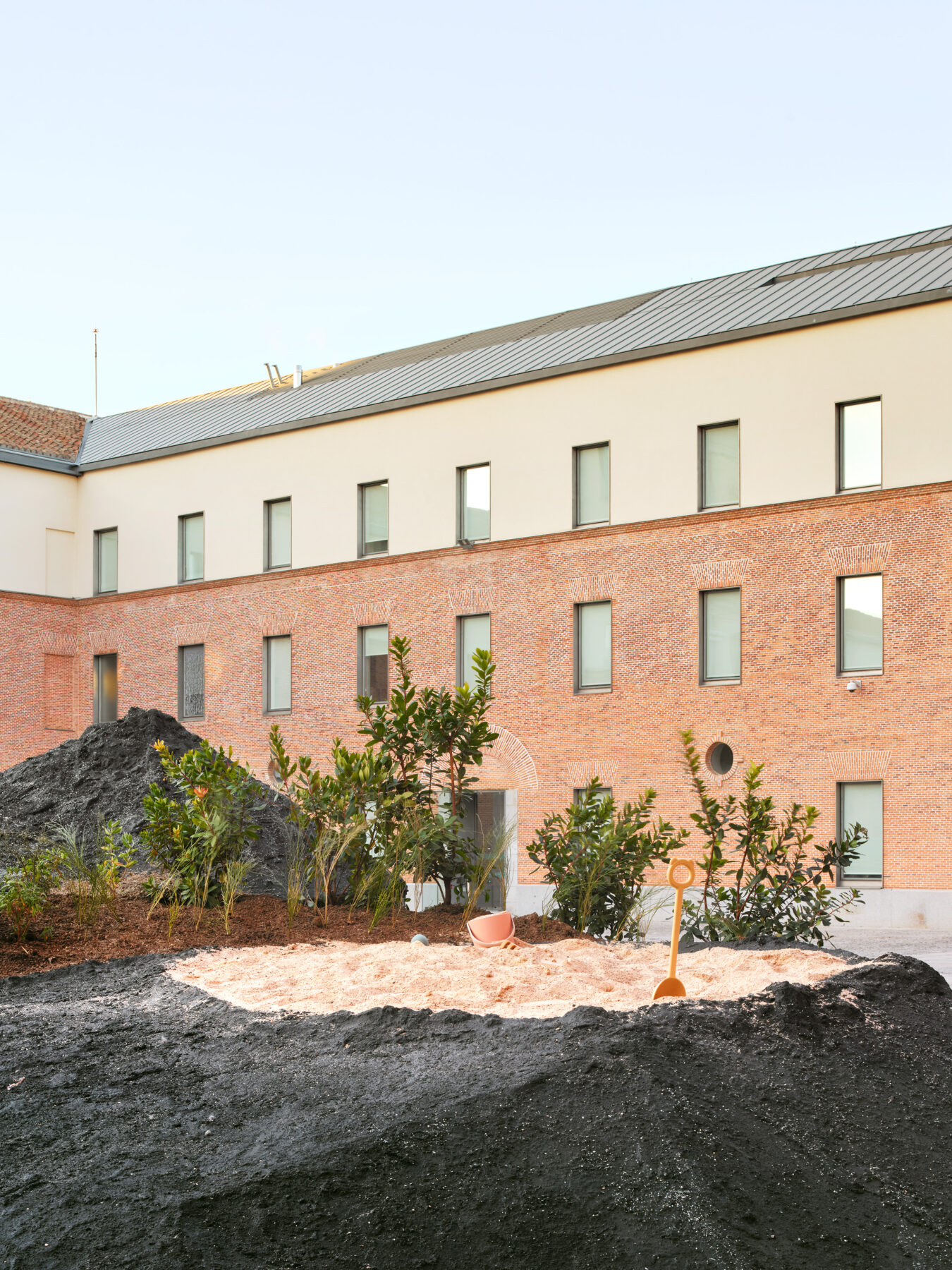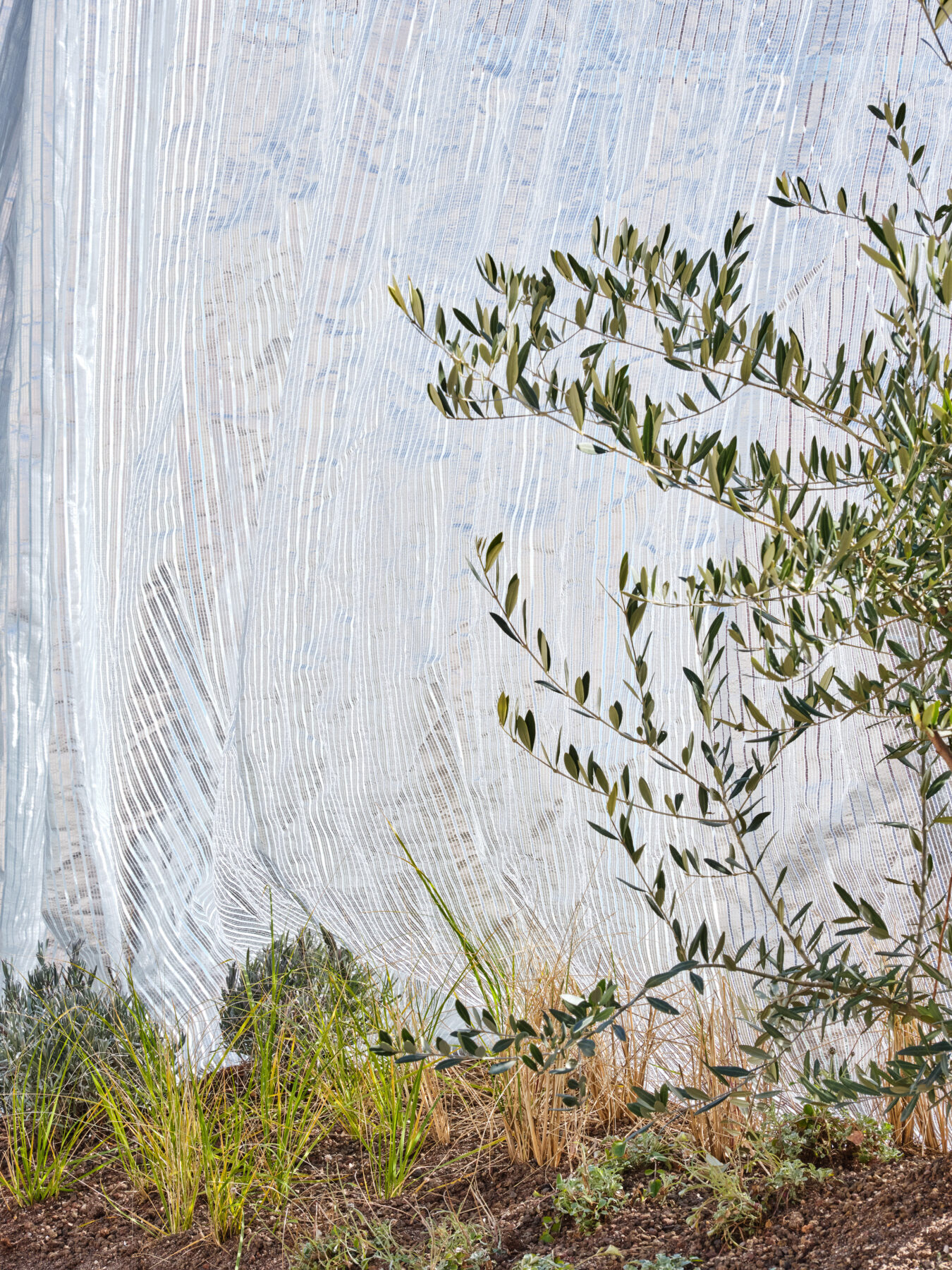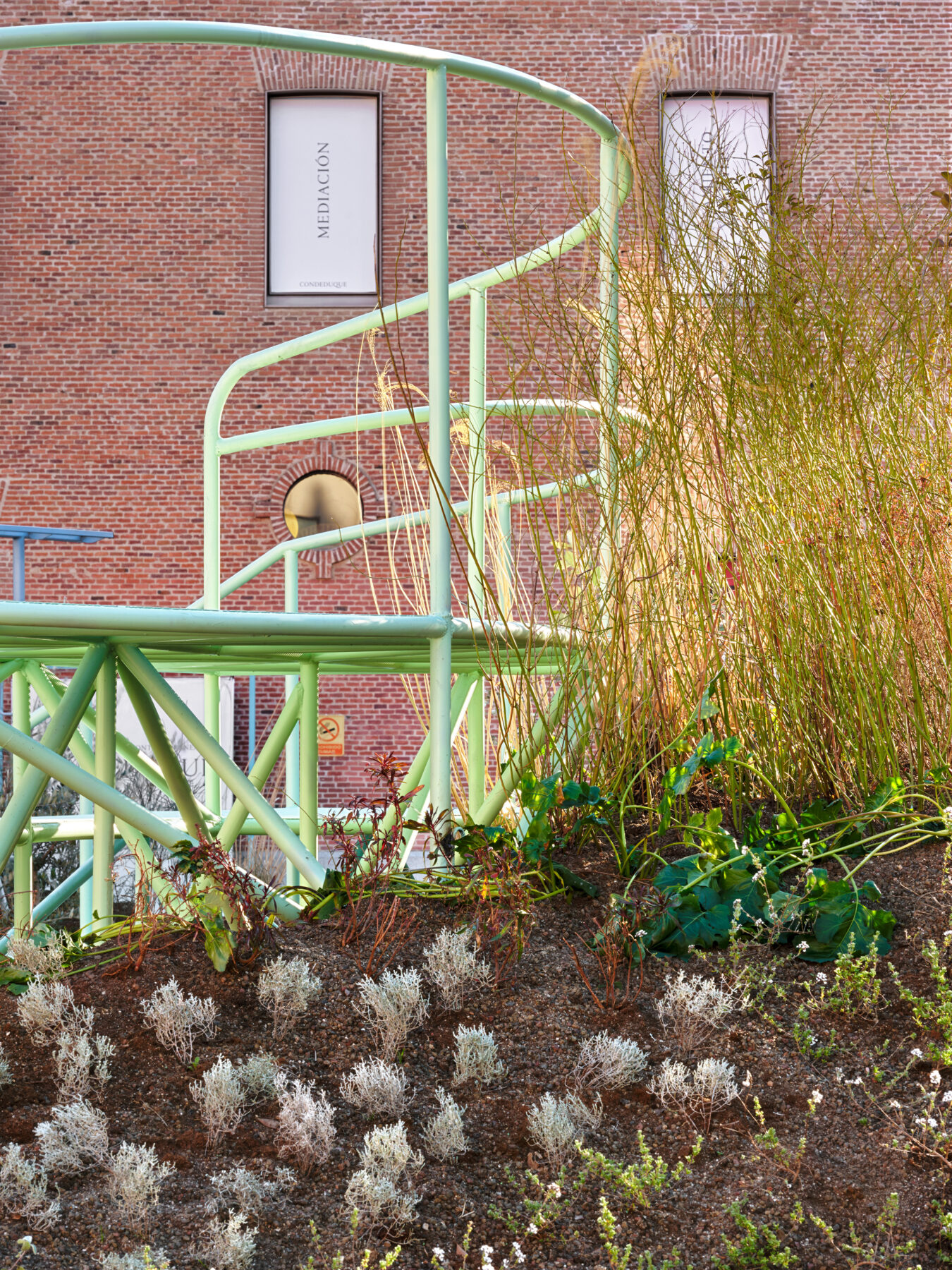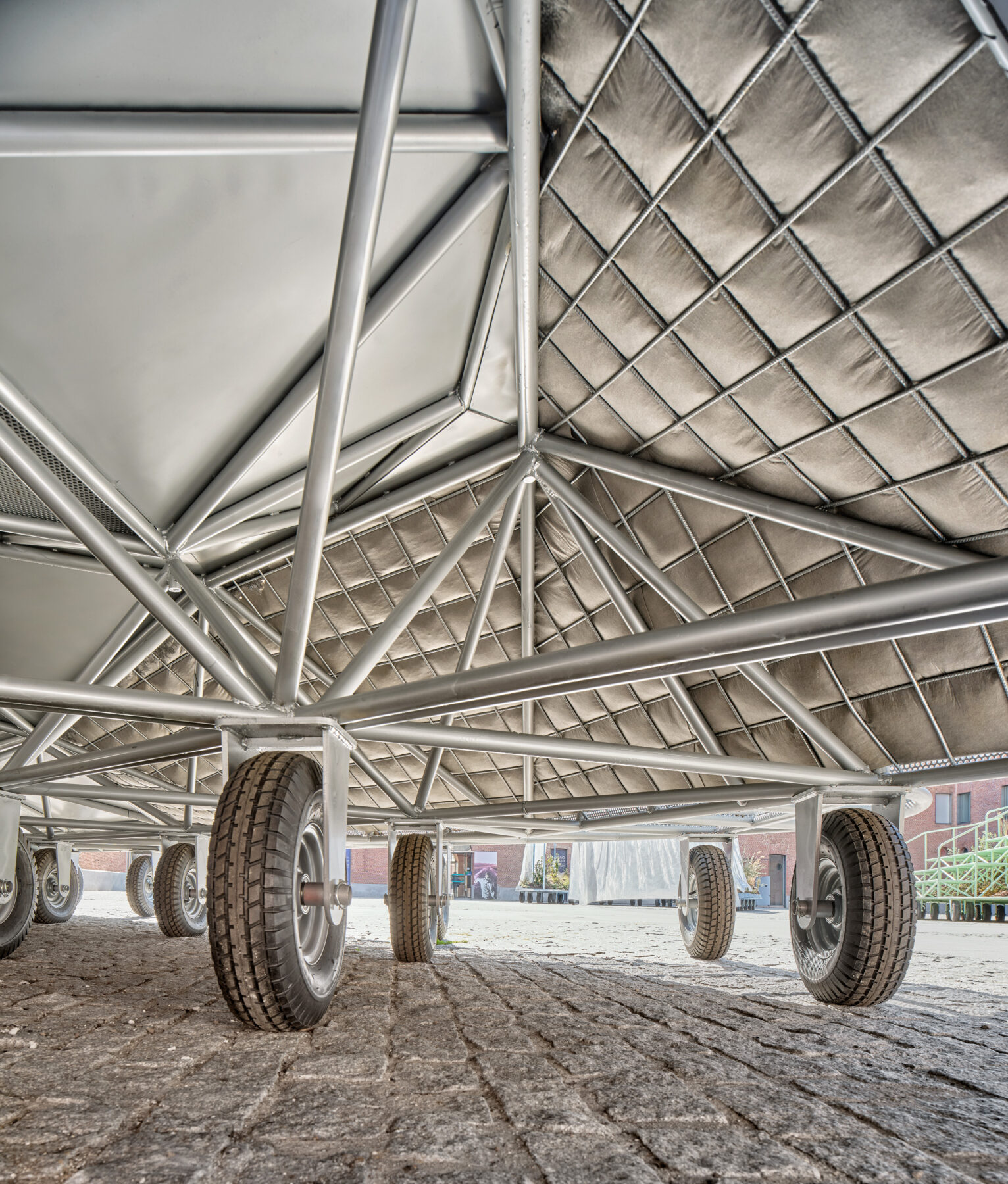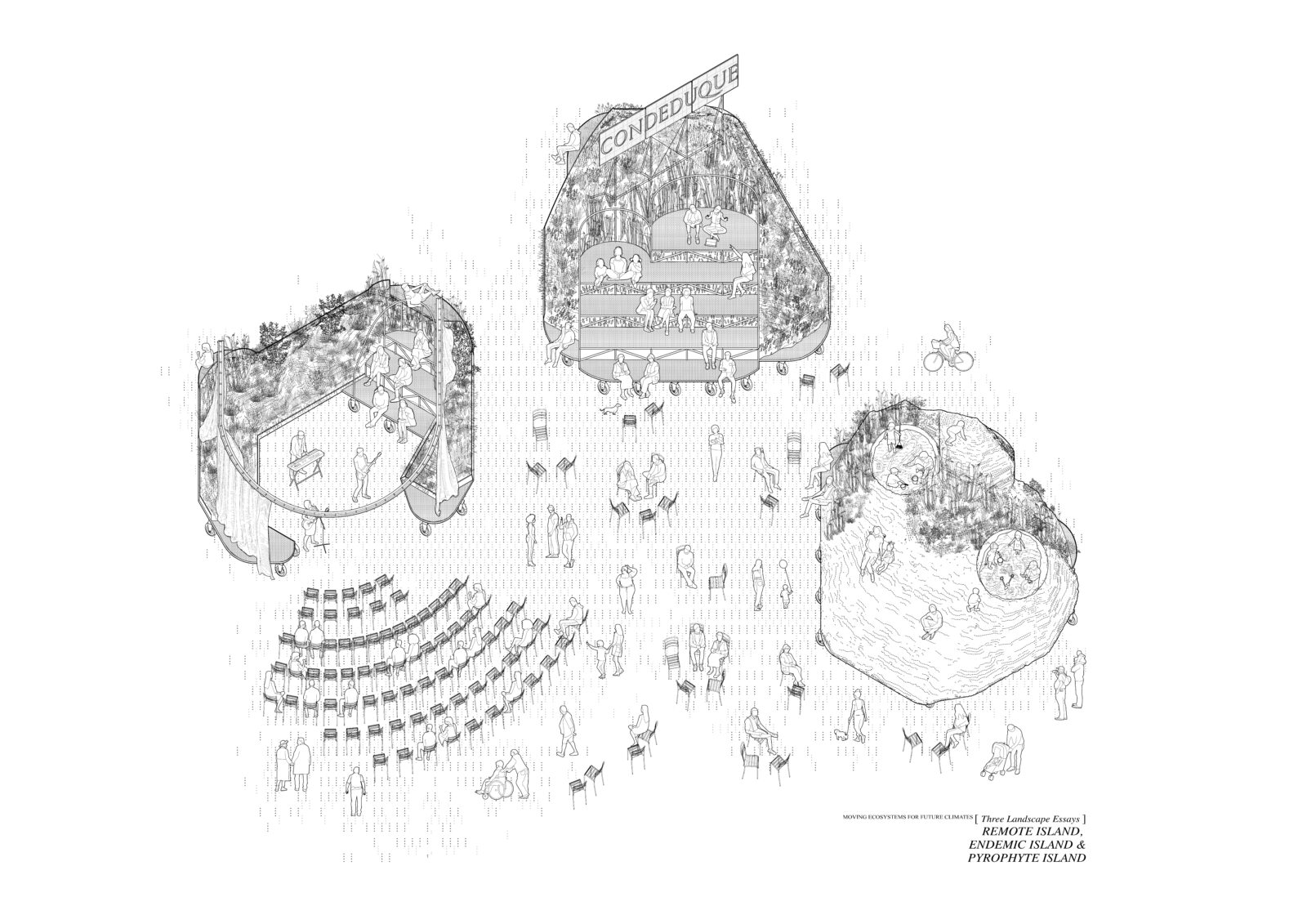Three Landscape Essays by Lys Villalba and Lluís Alexandre Casanovas Blanco is a pilot project that tests strategies to mitigate the effects of the climate crisis in Southern-european public space. Different phenomena–including recent heat waves and prolonged droughts, alongside the normalization of extreme weather phenomena such as snowfall or torrential rains–, highlight the lack of preparedness of southern European cities for the evolving climate crisis.
These new conditions compel us to rethink our public space. In urban areas, a widespread lack of shade and an increase in temperatures due to impermeable surfaces and a scarcity of plant species softening the effects of heat, urge us to resort to new imaginaries.
Far from a limitation, this crisis offers the opportunity to reconsider public space as a meeting place for diversity, a site of comfort for individuals from the same or different species, a node of convergence for different worldviews beyond the human.
Yet, the challenge is: How do we increase vegetation in the city in the face of the growing prospect of water scarcity?
How can we imagine a public space for gathering without consuming a large volume of resources, a space pleasant for various stakeholders, a space fostering new ideas of community beyond the human species?
Responding to some of Madrid’s recent remodeling of public spaces –which overlook the urgency of the new climate situation and its opportunities–, Three Landscape Essays constitutes a pioneering experience imagining how our squares and streets could be in the near future. Our intervention takes place in the Central Courtyard of Conde Duque, a large 4,500 m2 military design void serving as the access point for institutions occupying spaces in the former barracks, including the Conde Duque Center for Contemporary Culture, the Villa Archive beneath the square, the Municipal Museum of Contemporary Art, the Historical Library and Municipal Newspaper Library of the city of Madrid, the Digital Library Memory of Madrid, the Benito Pérez Galdós Public Library, and the Víctor Espinós Music Library. Despite its potential as a meeting place for various users and neighbors, its monumentality presents problems of thermal comfort, lack of shade, and high temperatures caused by impermeable surfaces, as well as issues of scale, with a lack of resting places and spaces for play, meeting points for teenagers, and resting spots for older residents in the area or visitors to the neighborhood.
With the aim of fragmenting this large square into smaller spaces, we propose the construction of three islands or floating gardens.
These three different units allow for the emergence of unforeseen activities and unexpected interactions among the different audiences of the institutions surrounding the space. Each of these islands presents a specific ecosystem referring to different strategies for new climatic conditions: from species representing the characteristic vegetation of the Mediterranean basin to the adaptation of species from other latitudes and pyrophytic plants that, in drought conditions, make heat their mode of survival and propagation. These three landscapes also incorporate a family of unique elements providing the institutions with spaces for theater, dance, spoken word, performance, visual arts, and music. Equipped with wheels, the islands can move to the sides to reclaim the large space, hosting major events. The islands deploy new networks of relationships, enabling new uses and modes of communal living that extend the outdoor programming of Conde Duque’s various institutions and complement the public spaces of its dense surrounding neighborhood.
At the entrance, in the center of the courtyard and in front of the access to the Municipal Archive, lies the first island –called Remote Island–, characterized by a double tiered seating area for events and a large neon sign powered by solar energy. Beneath the seating area emerges a landscape with species imported from different latitudes and cultures, similar only in their resilience to our climate. These are plants from remote ecosystems that have proliferated in the landscaping of our country in recent years, part of an ideal of global plant beauty with bold colors, voluminous forms, and a need for more water than the other islands. The widespread presence of angiosperm species, producing flowers and fruits, aims to attract insects and birds that, in recent years, saw their habitats reduced in central Madrid.
To the left, marking the entrance to the Conde Duque Center for Contemporary Culture and the Municipal Museum of Contemporary Art, we find a second island –the Endemic Island– which houses a small experimental theater. A perimeter curtain determines the position of the spectators. A small tiered seating area inside allows for small-format performances; at the same time, the curtain defines an empty space that serves as a stage for larger events. The island contains endemic species that shape the dry Iberian landscapes, such as the dehesa with its strawberry trees and brooms, or the Mediterranean coastal landscapes, full of olive trees and rosemary. This island, which silver curtain becomes key in the new image of the courtyard, highlights the commitment of the Conde Duque Center to the creation, dissemination, and research of contemporary scenic languages.
Finally, defined by a rough and dark materiality as the one of volcanic landscapes, the third island– called Pyrophytic Island– is characterized by its gentle slope, to be used interchangeably as a stage, an orchestra or a resting area. Located near the entrance to the various libraries, this island contains two sandboxes in the form of craters divided by a hill. Throughout its surface, masses of pyrophytic species appear: some, like the rockrose, spontaneously combust under extreme conditions; others, like the strawberry tree or asphodel, are even resistant to fire. This island is a space for exploration designed for children, constituting an alternative from the standardized games found in the squares of central Madrid.
Three Landscape Essays presents an innovative structural solution that allows for the installation of gardens in public spaces serving as roofs for parking lots, commercial galleries, or subway stations. Until now, the presence of underground levels beneath squares and streets has limited the presence of trees, shrubs, and large masses of vegetation, which require thick substrates accumulating water, thus becoming heavier and heavier over time. To solve this problem, soil engineers helped us design fertile, thin, and lightweight terrains, while structural engineers devised a load distribution system evenly distributing the soil’s weight, making these gardens suitable for city streets with underground levels.
Although the islands appear as huge topographies, their inside is actually hollow, as if pierced by immense caves lightening their weight.
In conclusion, Three Landscape Essays proposes new strategies for addressing the future of public space and landscape surrounding us by adapting available resources to the constraints of climate change. The project envisions long-term resilient landscapes as well as communities thriving in the shelter of these new spaces.
Facts & Credits
Project title: Three Landscape Essays: Mobile Ecosystems for Future Climates
Typology: Landscape architecture, urban design
Location: Madrid
Architecture: Lys Villalba and Lluís Alexandre Casanovas Blanco
Production: Viuda de Ramírez
Design team collaborator: Irene Domínguez
Landscaping: Thinking Through Soil
Collaborators: Jaime de la Torre, Paco Téllez Buitrago, Jingyuan Zhu
Structural project: Mecanismo Ingeniería
Photography: José Hevia
Text: provided by the architects
Lys Villalba is an architect, educator, and independent researcher. Her works have been recognized with multiple awards, including nominations for the EU Mies Award 2022 and Simon Architecture Prize 2022. They have also been honored in the editions of the COAM and MatCOAM Awards 2021, FAD Prize 2021, and Mapei Awards 2021, among others. Her architecture and research projects have been exhibited at the Venice Architecture Biennale, MoMA in New York, and MAK in Vienna, and published in numerous specialized magazines. Villalba was nominated for the Rolex Mentor and Protégé Arts Initiative in 2016
Lluís Alexandre Casanovas Blanco is an architect, curator, and critic. His projects have been recognized with various awards, including the Simon Architecture Prize 2018, the Bauwelt Prize 2019, the XV Spanish Biennial of Architecture and Urbanism, and the FAD Prize 2017. His work has been published in magazines such as Volume, Domus, Wallpaper, PLOT, or Icon Design, among many others. Casanovas Blanco was a finalist for the Millennium bcp Début Prize 2019 at the Lisbon Triennial for architects under 35 years old.
READ ALSO: Koukoula in Tropaia, Arcadia | by Leonidas Papalampropoulos & Georgia Syriopoulou
